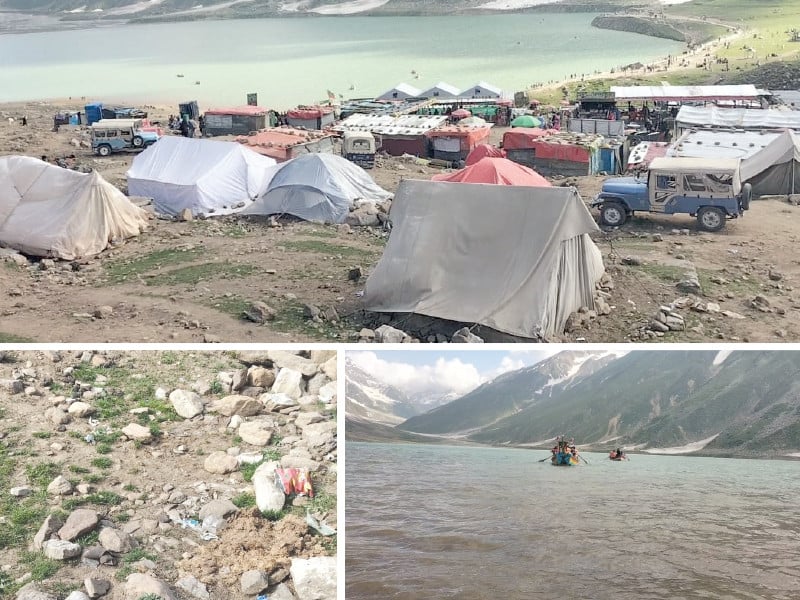
Lake Saiful Malook, a breathtaking tourist destination in northern Khyber-Pakhtunkhwa, is facing serious threats to its natural beauty.
This iconic national park, known for its enchanting scenery, is witnessing a rapid decline in its environmental integrity.
The volume of Lake Saiful Malook is diminishing, and the water’s colour is changing due to rocks and soil eroding from the surrounding mountains and falling into the lake. In addition to these natural factors, human negligence exacerbates the situation, endangering the lake's natural landscape.
Construction activities in the areas surrounding Lake Saiful Malook are not adhering to established rules and regulations. This has led to a noticeable alteration in the lake's natural beauty, diminishing its charm and the clarity of its water. The lake, which holds the legendary romantic tale of Prince Saiful Malook and Fairy Badiul-Jamal, is now a shadow of its former self.
According to storytellers, poets and residents, the love story of the human Saiful Malook and the fairy Badiul Jamal began at this lake and concluded here. Local storytellers earn their livelihood by narrating this tale to visiting tourists.
Malka Parbat, also known as Queen Mountain, stands majestically in the backdrop, cloaked in snow, adding to the lake's mystical allure.
Situated in the Kaghan Valley at an altitude of 10,578 feet above sea level, Lake Saiful Malook is renowned worldwide for its magical beauty and romantic associations, often referred to as the "abode of fairies."
Thousands of tourists from Pakistan and abroad visit the lake each year.
Tourists who spoke to The Express Tribune expressed concern that if these issues are not addressed, the lake's beauty will be entirely lost in the coming years due to government negligence and irresponsible behaviour by visitors.
They emphasised the need for the wildlife department to issue SOPs for construction around the lake to prevent further degradation.
Although an entry fee of Rs20 is charged for each tourist visiting the lake, no visible effort is being made to preserve its beauty. Attempts to contact Muhammad Taimur, the Divisional Officer of Wildlife, for comments were unsuccessful as he did not respond to phone calls.
Professor Muhammad Rafiq of Degree College Balakot, who closely monitors environmental changes, explained that the primary cause of the water's colour change is land erosion from the rapidly melting glaciers on the surrounding mountains. Soil carried by the glacier water flows into the lake, altering its colour and reducing its volume.




1728127649-0/BeFunky-collage-(2)1728127649-0-165x106.webp)
1727242355-0/Diddy-(1)1727242355-0-165x106.webp)
1728020241-0/Express-Tribune-Web-(12)1728020241-0-270x192.webp)

1725254039-0/Untitled-design-(24)1725254039-0-270x192.webp)









COMMENTS
Comments are moderated and generally will be posted if they are on-topic and not abusive.
For more information, please see our Comments FAQ